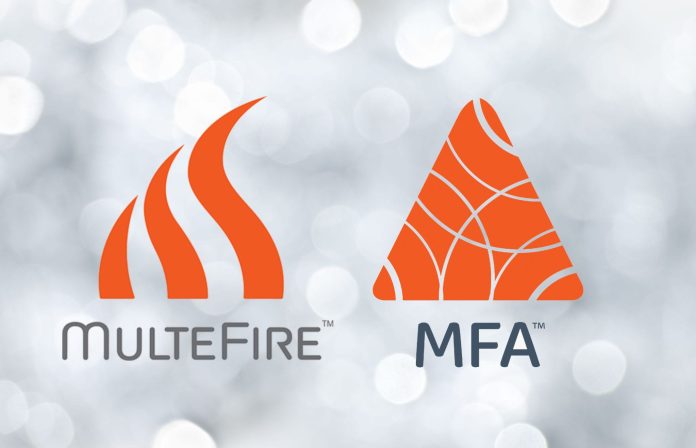The LTE-based MulteFire standard, one of the pioneer technologies in the private cellular market, is alive and kicking – well, alive, anyway – and also mutating into something brand new, which is potentially more powerful for the telecoms industry’s great hopes for 5G as a platform for industrial change. So the story goes.
The old MulteFire Alliance, convened as a kind of rogue working group outside of 3GPP to develop LTE in unlicensed spectrum, has rebranded as MFA and redefined its core purpose. It has moved away from technical development, perceived by telecoms purists for a long time as a somewhat murky pursuit, to focus on industrialising 5G for enterprises – and for the whole telecoms industry at large.
The change has come as the MulteFire project, to appropriate 3GPP technology for enterprises to deploy private LTE in unlicensed spectrum, has found its way back into the 3GPP agenda, with development of 5G NR-U for use of standalone 5G in unlicensed spectrum. The emergence of 5G NR-U makes MulteFire an LTE brand without a 5G future, effectively.
But 5G is not really a going concern for industry, as yet. Just because there are so few industrial 5G devices available. And because, except for a handful of headline-grabbing enterprise deployments, either of go-faster broadband 5G or lab-style industrial 5G, the private networking market remains an LTE affair. Which means MulteFire is not done with yet.
In fact, after a difficult birth and a troubled adolescence, MulteFire has come of age, we are told. A lack of devices, because of a lack of chipsets – as the chicken-and-egg of supply-and-demand was tilted by the industry rush on consumer 5G, and broken by the global Covid-19 pandemic – made MulteFire into a wallflower, even as the whole industry has copied its steps.
But Nokia, the loudest voice on the private networking scene, has a new MulteFire device in the wings, we hear, to go with a 2018-era MulteFire base station to serve rising demand for additional LTE spectrum among existing private LTE/5G clients, as well as enterprises after temporary cellular fixtures, and mobile operators that have since seen the sense in various grades of private ‘vertical’ spectrum.
But the new strategy is not fixed on private LTE – just brand-new in unlicensed spectrum, but already getting-on in locally-licensed and shared spectrum – but with industrial 5G in all kinds of nationally licensed, locally licensed, shared, and unlicensed spectrum. It is branding this as a new ‘Uni5G’ (universal 5G) ecosystem, and it has set itself a task to establish an easier industrial 5G trading market between tech buyers and tech sellers.
Specifically, MFA is to deliver ‘technology blueprints’ so every different business in every different vertical can spec and source industrial 5G devices. Its first blueprint will be available in the fourth quarter of 2021. Alongside, it has secured a global Public Land Mobile Network (PLMN) ID by the ITU, which it can issue to enterprises to identify private networks and authorise devices connecting to them.
In a press statement, Mazen Chmaytelli, president at MFA, commented: “MFA paved the way for industries to contemplate how they can deploy their own private network in unlicensed spectrum using MulteFire 4G/LTE-based cellular technology with high-performance, built-in security and mobility benefits. Now through our expanded role in enabling 5G private networks, MFA will provide industry verticals with practical guidance on deployment that will meet their unique requirements and determine which spectrum option is right for their site.”
He added: “Across all industry verticals, we’re witnessing a drive to increase control, reliability and security through deployment of private networks. Enterprises can now leverage locally licensed spectrum using Uni5G technology, and later can use global unlicensed or shared spectrum when 5G NR-U solutions become available. Through our Uni5G Technology Blueprints and our unique global PLMN ID, MFA has simplified the path to 5G private networks and is helping to accelerate the ecosystem.”
Looked out for upcoming interviews with MFA and Nokia.

